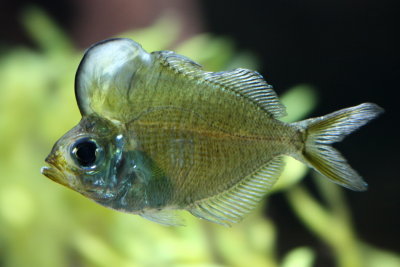

#Humphead glassfish install
To ensure the water is well oxygenated, ensure the tank is not overstocked, and install a filter that keeps the water moving vigorously. Keep nitrates low by performing regular water changes, preferably keeping the nitrate concentration below 20 mg/l. Fish from fastwater habitats invariably do badly in nitrate-rich, oxygen-poor water. What matters more is water quality, particularly oxygen concentration. Unlike some glassfish in the trade, these are strictly freshwater fish and shouldn’t be kept in a brackish water aquarium. The Salween, for example, is mostly a slightly soft and acidic body of water, much like other South-East Asian rivers, but Humphead glassfish also seem to do perfectly well in the hard, alkaline water of southern England. Little is known about their diet in the wild but, by analogy with other freshwater glassfish, it can be assumed that they are opportunistic predators feeding on such as shrimps, aquatic insect larvae and small fish.ĭespite their delicate appearance, glassfish are surprisingly adaptable, and the Humphead is no exception. They appear to occupy a similar niche to our native trout species, maintaining position in currents that flow around rocks and riffles, snapping up small animals that drift by. In all cases, these fish are found in clear, shallow, fast-flowing streams. It is assumed that Humphead glassfish occur in a number of other streams and rivers in this area, though this isn’t certain.Īt least some specimens that turn up in the ornamental fish trade appear to come from the Salween river on the Myanmar-Thai border. When Maurice Kottelat described these fish just six years ago, he based his work on specimens collected from the Ataran river basin in Myanmar, formerly Burma. Basic coloration is otherwise silvery-white, except for smoky-grey markings on face and fins. They are not as transparent as some other glassfish species, but have a rather beautiful golden sheen that immediately catches the eye. Both sexes have these humps, though those on mature males are larger.Īpart from these distinctive humps, Parambassis pulcinella conform, in most regards, to the usual glassfish shape.

Unlike the humps on cichlids, the shape on these glassfish is thin - resembling more of a fin than anything else. It is generally much like any other glassfish, but is always distinguished by that large nuchal hump! Choose tankmates with care, warns Dr Neale Monks.ĭescribed as recently as 2003, the Humphead glassfish has quickly become one of the more familiar members of the family Ambassidae. Easily distinguished from other glassfish, the Humphead has qualities but also attitude.


 0 kommentar(er)
0 kommentar(er)
